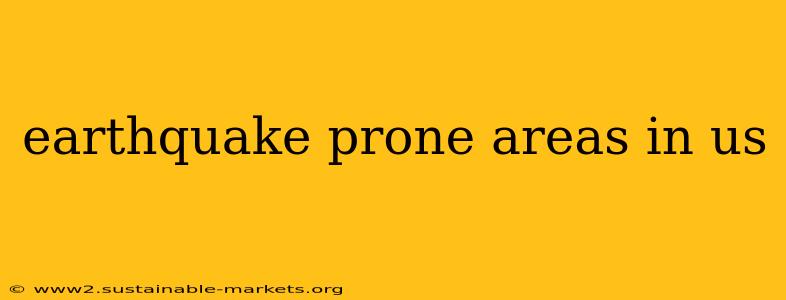The United States, while geographically vast and diverse, isn't immune to the powerful forces of earthquakes. Understanding which regions are most susceptible is crucial for preparedness, building codes, and ensuring public safety. This guide delves into the earthquake-prone areas within the US, examining the geological reasons behind their vulnerability and offering insights into the associated risks.
The Ring of Fire and the US
A significant portion of US earthquake activity stems from its proximity to the infamous Ring of Fire, a zone of intense seismic activity encircling the Pacific Ocean. The western coast of the US, particularly California, Oregon, Washington, and Alaska, experiences frequent tremors, ranging from minor shakes to devastating quakes.
California: The Earthquake Capital
California, undoubtedly, holds the title of the most earthquake-prone state. The San Andreas Fault, a major transform boundary where the Pacific and North American plates meet, runs through the state, creating a high-risk zone. The fault's movement causes significant stress buildup, leading to periodic, and often powerful, earthquakes. Major cities like Los Angeles and San Francisco are situated within this high-risk zone, making earthquake preparedness paramount for their residents.
The Pacific Northwest: Cascadia Subduction Zone
Beyond California, the Pacific Northwest faces a different, but equally significant, threat: the Cascadia Subduction Zone. This area, where the Juan de Fuca plate subducts beneath the North American plate, is capable of generating megathrust earthquakes – events that can be significantly larger and more destructive than those along the San Andreas Fault. Oregon, Washington, and parts of northern California are within this high-risk zone, facing the potential for massive earthquakes and subsequent tsunamis.
Alaska: A Land of Seismic Activity
Alaska, situated at the junction of several tectonic plates, experiences a high frequency of earthquakes. Its location along the Ring of Fire exposes it to significant seismic activity, resulting in frequent, albeit often moderate, earthquakes. However, the potential for larger quakes remains a considerable concern.
Other Earthquake-Prone Regions in the US
While the West Coast dominates the conversation surrounding US earthquakes, it's important to note that seismic activity can occur across the country. Though less frequent and intense than on the West Coast, other areas experience notable seismic events.
Central and Eastern US: Intraplate Earthquakes
The central and eastern US experience what are known as intraplate earthquakes. These earthquakes occur within tectonic plates rather than at their boundaries. While less frequent than those on the West Coast, these earthquakes can still be significant, as the seismic waves can travel further through the more stable rock, causing damage over larger areas. States like Oklahoma, Arkansas, Missouri, and South Carolina have experienced notable intraplate earthquakes in recent years. These events are often linked to human activities such as wastewater disposal from oil and gas operations.
Understanding Earthquake Risk: Beyond Location
Knowing the location of earthquake-prone areas is only part of the equation. Understanding the specific risk factors in your location – including proximity to known fault lines, soil type, and the age and construction of buildings – is crucial for personal safety. Local emergency management agencies and geological surveys provide valuable resources to help you assess your specific risk.
Conclusion: Preparedness is Key
Living in an earthquake-prone area requires proactive preparedness. This includes developing a family emergency plan, creating an earthquake kit, and understanding your building's resilience. By understanding the risks associated with earthquakes and taking appropriate precautions, you can significantly mitigate the potential damage and protect yourself and your loved ones. Staying informed about earthquake safety through reputable sources is essential for maintaining preparedness.

